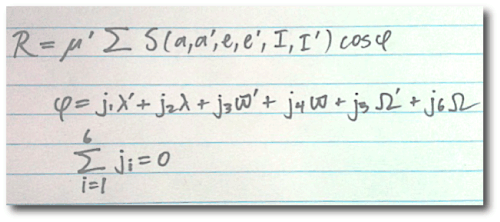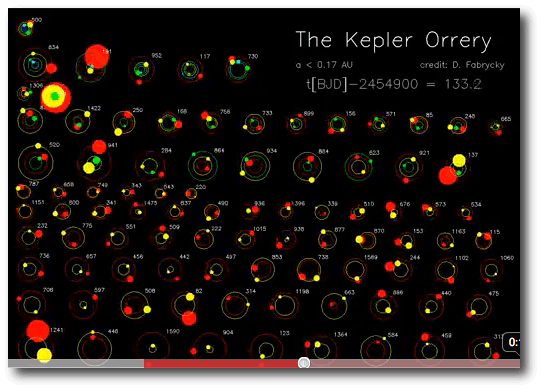The planetary disturbing function describes the time-dependent perturbing potential of one planet acting on another. The disturbing function dictates the non-Keplerian evolution of planetary orbits, and while it’s conceptually simple, it’s a triumph of analysis that it can be written down as a function of the planetary orbital elements themselves.
In large part, celestial mechanics consists of choosing the right terms in the disturbing function for a particular planetary configuration, and then working out the simplified motion that arises from the chosen terms. With this program, phenomena ranging from the “Great Inequality” of Jupiter and Saturn to the possible eventual ejection of Mercury from the Solar System can be isolated and understood.
Wednesday’s Kepler data release spills a nearly overwhelming number of new multiple-planet systems into the public domain. The data include 115 candidate double-transit systems, 45 triples, 8 quads, and one each with five and six transiting planets. Precise timing measurements make all of these set-ups amenable to analysis. Correct case-by-case invocation of the disturbing function, along with an account of tidal dissipation when relevant, will generate a deep understanding of what these planets are doing, and how they got to their present state.
That’s more than a few days work. In the interim, Dan Fabrycky has created a mesmerizing video (click here for the YouTube link) which shows a wide selection of the new multi-planet systems running through their orbits for the duration of the nominal Kepler mission. It’s a multiplexed digital update of the classical clockwork orrerys that mechanically integrated the motion of those old-fashioned planets in our own solar system.



